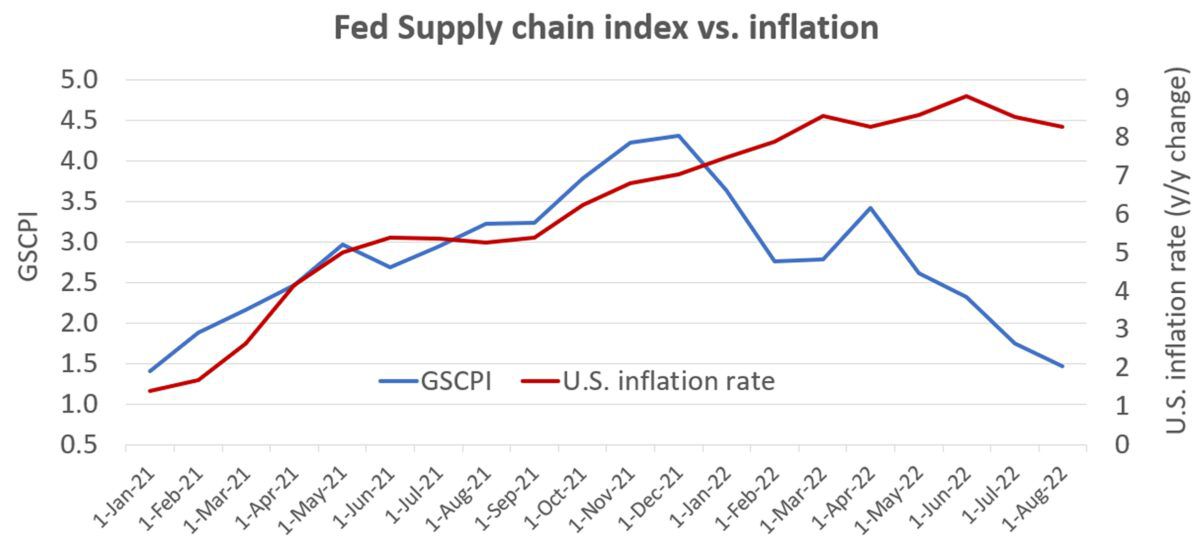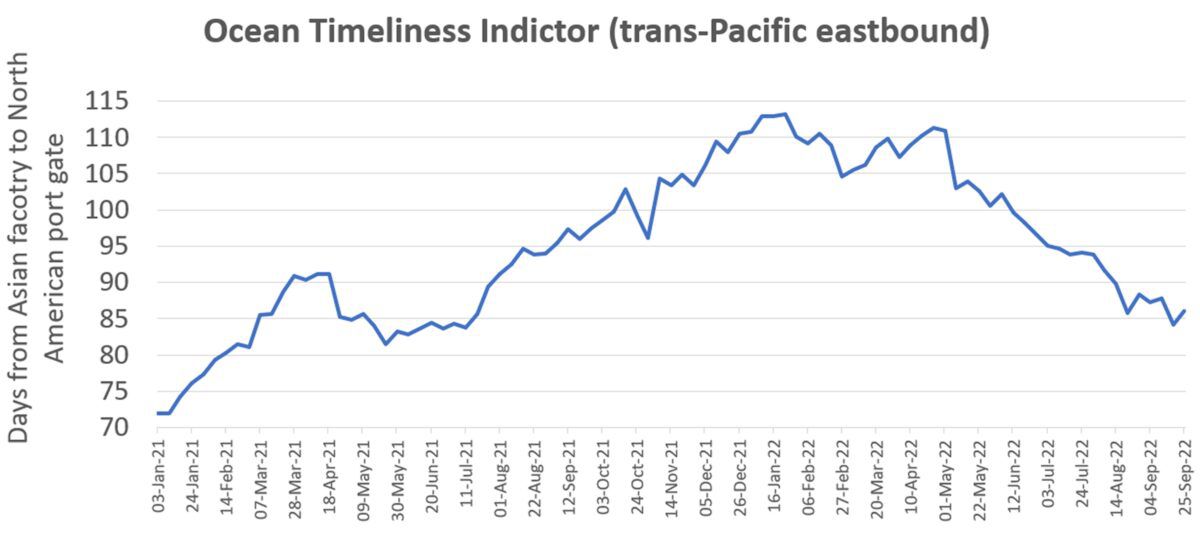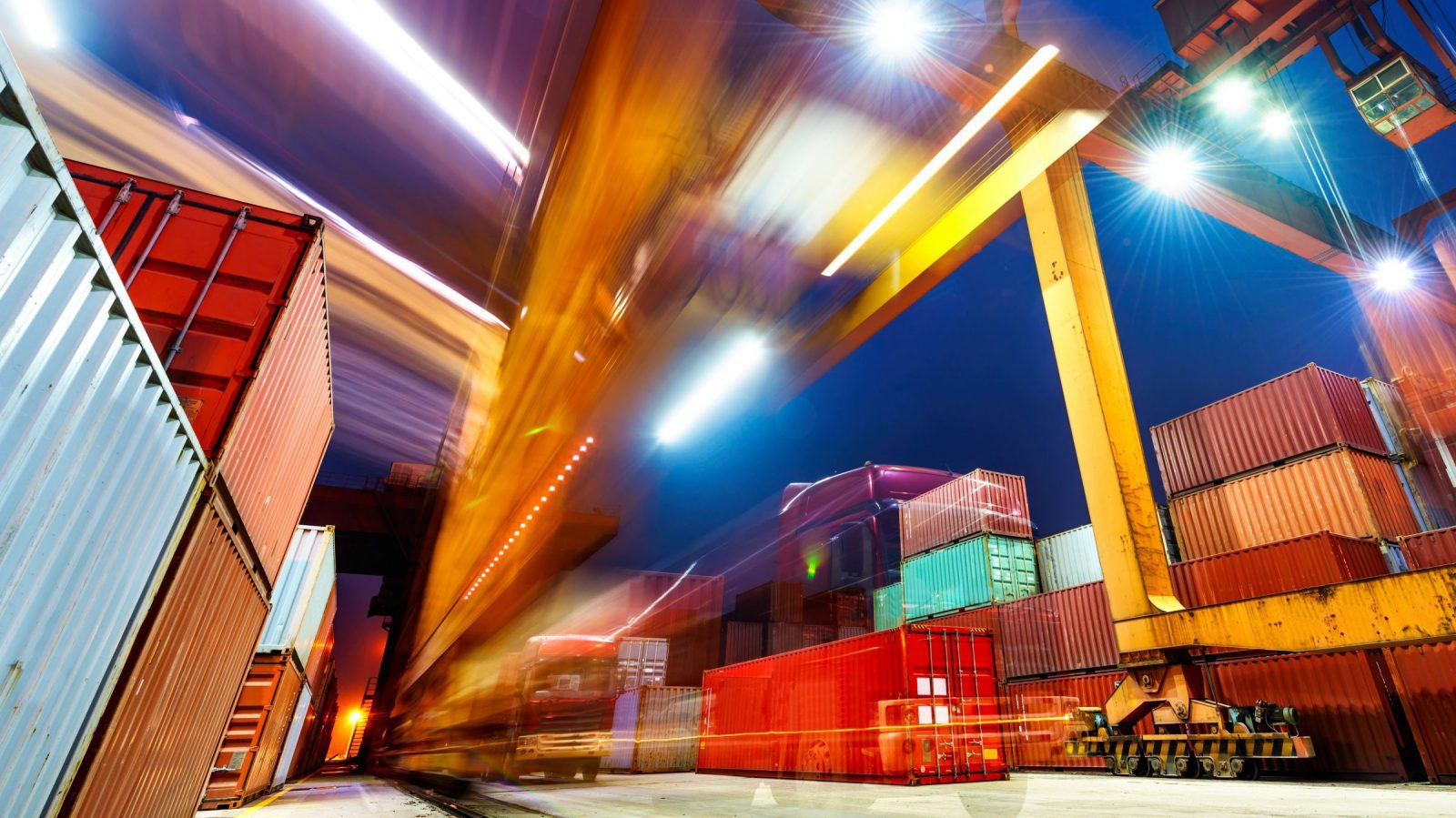The implication was that if supply chain pressure reduced, inflation would ease. It hasn’t worked out that way.
The monthly U.S. inflation measure (headline Consumer Price Index) has gone in the opposite direction over the same period, up 17%, from 7.04% (year-over-year increase) in December to 8.26% last month.
 GSCPI is standard deviations versus average since 1997 (Chart: American Shipper based on data from government data on U.S. inflation and GSCPI data from Federal Reserve Bank of New York)
GSCPI is standard deviations versus average since 1997 (Chart: American Shipper based on data from government data on U.S. inflation and GSCPI data from Federal Reserve Bank of New York)
Other supply chain indicators also fall
It’s not just the GSCPI that’s unmoored from inflation.
Flexport created a measure of supply chain pressures called the Ocean Timeliness Indicator (OTI). The OTI measures the average number of days cargo takes from the time it leaves a factory in Asia to the time it exits the terminal gates in the U.S. or Europe.
The curve of the trans-Pacific eastbound OTI roughly mirrors the GSCPI. After peaking at 113 days in the week ending on Jan. 23, it fell 24% to 86 days on the week ending on Sept. 25.
 (Chart: American Shipper based on data from Flexport)
(Chart: American Shipper based on data from Flexport)
Spot freight rate indexes have likewise trended in the opposite direction from inflation in 2022. The weekly Drewry World Container Index peaked at $10,377 per forty-foot equivalent units (excluding premiums) in the week ending on Sept. 23, 2021. It has since fallen 61% to $4,014 per FEU.
 Average global spot rate (excluding premiums) in $ per FEU (Chart: SONAR)
Average global spot rate (excluding premiums) in $ per FEU (Chart: SONAR)
Yet another example: Container bookings have followed a similar downward slope as the GSCPI, OTI and Drewry World Container Index. SONAR’s Container Atlas features a proprietary index of bookings based on scheduled date of departure to the U.S. This index saw a sharp decline starting in May. Between its late April high and Sunday, it has fallen 35%.
 Index: 100 = January 2019. Bookings (not loadings) from all destinations to U.S. (Chart: SONAR Container Atlas)
Index: 100 = January 2019. Bookings (not loadings) from all destinations to U.S. (Chart: SONAR Container Atlas)
Why hasn’t supply chain easing helped inflation?
Unlike in late 2021, when retail execs on conference calls talked about import delays and marking up goods to pass along surging freight costs, they’re now talking about having too much inventory in warehouses and discounting goods to clear the excess.
If the supply chain crunch was such a major driver of inflation, why are so many indicators pointing to an easing of supply chain pressures at the same time inflation remains exceptionally high?
The GSCPI, while down sharply from its peak, is still almost six times higher than it was in 2017-19. Flexport’s OTI is still more than double its pre-COVID level.
The Drewry World Container Index is currently three times higher than it was at this time of year in 2019. The SONAR Container Atlas Ocean TEU index for US-bound cargoes is currently 35% higher than it was at this time in 2019.
Ship-position data and queuing lists showed 109 container vessels waiting off U.S. ports as of Sunday. That’s down from a high of over 150, but still far above the pre-COVID normal in the single digits.
Signs of hope but supply chain crunch not over
Flexport Chief Economist Phil Levy highlighted the role of the supply chain crunch in public policy. “It has fed into a lot of macroeconomic policy and into what the Fed has been doing. To the extent one thought supply chain problems would get fixed, that was part of the rationale for calling [inflation] transitory.”
On a positive note, Levy pointed to the drop in the cargo transit times measured by the OTI. “If you look at the [historical] pattern, it gets better around late spring and early summer and then in late summer, it starts to get worse. We saw that in 2020 and in 2021. We waited to see that in 2022 and it didn’t happen. To me, that’s notable. I would put that down as a sign of hope.”
On the other hand, Levy noted that U.S. consumer spending on durable goods continues to be surprisingly strong. “Durable consumption is down from the peak in the spring, but we’re still consuming 20% more durables [than pre-pandemic]. And nondurables are not even that far off the peak. So, we have not seen a big consumption drop-off. There’s still a lot of demand out there.”






